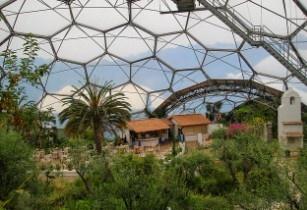The last thing on the minds of workers at the oldest-known mine on archaeological record some 43,000 years ago in Swaziland was what their mine might become long after their tools had been put away
Fast forward to date, the transformation from active mine to mine closure is a C-level business consideration with just as many consequences as traditional mining decisions such as mine planning, development and geology.
For Tom Butler, CEO of the International Council on Mining and Metals (ICMM), ensuring that mines have alternative uses post closure is an essential step in building and maintaining a company's social license to operate.
Butler, said, “The mines being built today are markedly different from those built not so long ago. The relationships that have been built with host communities are generally better and environmental performance much improved, but there is a still lot to be done on building stakeholder and community relations.”
“I think we need to take much more of a partnership model than we have done in the past. That means developing projects from the outset in a spirit of true partnership with surrounding communities, local government, and other economic actors,” added the CEO.
The Council will be meeting in Melbourne to coincide with IMARC, where more than half of ICMM’s member CEOs will be speaking and sharing their perspectives on mining and the global sustainability issues facing the industry.
“It is the first time ICMM’s Council has met outside of Europe or the US, and we recognise Australia as a centre of influence and excellence in responsible mining. Fourteen ICMM company members operate 190 mine sites in Australia,” said Butler.
According to the ICMM, responsible mine closure requires the active participation of local communities in the planning and implementation of actions, so that lasting benefits can be recognised.
Communities and local businesses grow up with dependence on the mine operation and the ceasing of operations has flow-on economic and social impacts. Thus, closure planning should be incorporated into the early stages of project development and operation.
As detailed in a 2016 report by the Mineral Policy Institute, Australia alone has 431 operating mines, 1,373 historic mines and 50,000 abandoned mines scattered across the country. For Butler, designing alternative uses for those mines is a concrete example of how miners can engage in a partnership with local stakeholders.
Examples of this approach are varied in their uses and location:
Rainforest: Located in Cornwall, England, the Eden Project was a china clay pit for more than 160 years. The project is now a popular tourist destination and research centre dominated by two huge enclosures that house thousands of plant species, including the largest ‘indoor’ rainforest.
Art galleries and health centre: the sister Wieliczka and Bochnia salt mines in Poland began operation in the 13th Century. Now UNESCO World Heritage Listed, both mines feature hundreds of kilometres of galleries with works of art, underground chapels and statues sculpted in the salt. The mine also houses an underground post office, restaurant, cinema, tennis court, and sanatorium which offers allergy and asthma treatment.
Amusement Park: Salina Turda is a converted salt mine in Turda, Romania - one of the world's oldest, with historical references dating back to as early as 1075. In 1992 it was transformed into an underground amusement park that features an amphitheatre, mini golf, ping pong tables, basketball courts, a bowling alley, a Ferris wheel and a carousel to name a few.
Hotel: Currently under construction, the InterContinental Shanghai Wonderland, located in the Sheshan Mountain Range about 50 kilometres from the city centre will become the first five-star hotel to be built in a quarry featuring extreme sports facilities and underwater rooms.
“We are developing three-year stakeholder engagement (plan) on critical topics, such as closure and community engagement. And we will continue our efforts to communicate better about what we and our members are doing to address these challenges, in a way that engages society,” finalised Butler.
Tom Butler and more than 250 mining leaders will be present at the IMARC in Melbourne Convention and Exhibition Centre from 29 October to 1 November 2018.





















